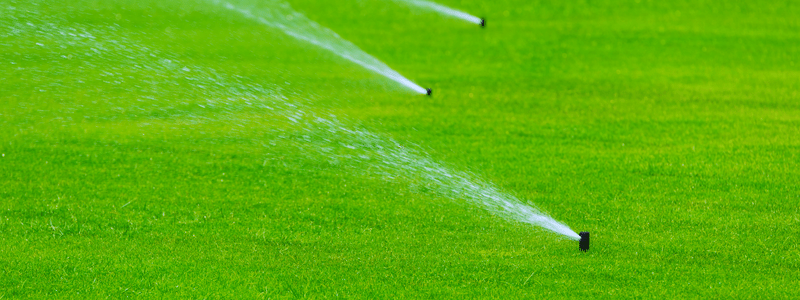Sprinkler systems work incredibly well. They allow you to maintain a lush, green lawn without having to constantly move sprinklers or water with a hose. The main benefit would likely be simply forgetting to water the lawn on a regular basis.
Sprinklers are a fantastic invention, but they are also a mechanical system that needs care and upkeep. This list of sprinkler dos and don’ts was put up for our customers by the irrigation staff at Heritage Lawns & Irrigation to ensure that your sprinkler system runs efficiently this season. If you adhere to these suggestions, you ought to have a lovely, unwinding summer on a lovely lawn.
Use your sprinkler system as follows:
– Early in the morning, water. Your grass may develop fungus as a result of nighttime irrigation.
– To stop watering when it is not essential, install a rain shutoff device on your sprinkler system.
– Know the volume of water that your sprinkler system produces.
– Placing empty tuna cans in the path of your sprinkler heads is a simple method to find out. Work in each zone.
– Set a timer for, 30 minutes and run the sprinkler for that duration. Once you’re done, pour all the water into a single container and use a ruler to gauge the depth
– To get the average amount of water applied in that area during a 30-minute period, divide that figure by the number of cans.
– Each zone will change somewhat because different sprinkler head types release different amounts of water. Your grass only needs one to a half inches of water each week (including Mother Nature’s additions).
– Every month, observe how your system operates to inspect it. This will let you verify that the heads are all still perfectly aligned, that no heads are broken or excessively leaking water, that all zones are still turning on, and that there are no significant damp patches in the grass that would indicate underground leaks.
TIP: Purchase a couple of additional sprinkler heads and components. A few spare parts will make repairs simple.
– To prevent damaging subterranean lines when you need to dig to fix an issue, call and have the utilities marked. Your city will typically designate your subsurface utility lines within 24 to 48 hours.
– Before winter, blow out your sprinkler system. Water that might otherwise freeze and harm the subsurface pipes will be removed by air pressure.
Avoid the following when using your sprinkler system:
– Avoid watering concrete surfaces like driveways and sidewalks to save water and money. Make sure the lawn and landscaped areas are the only locations your sprinkler heads water. On most systems, unnecessary watering can waste up to 500 gallons of water each month.
– When it’s raining, don’t utilise your sprinkler system. When rain is predicted, if you don’t have rain sensors installed, turn off your sprinkler.
– Don’t water your yard excessively. By causing runoff to seep onto streets or into drains, overwatering enables your sprinkler system to wastewater.
– Avoid watering between the hours of 10 am and 6 pm. Morning watering should take place between 6 and 10 a.m. Your lawn has all day to dry, and the wind and sun are often less severe. The best time to water is between 4 and 7 p.m., but doing so at night can encourage the spread of fungus and mildew. In the hot afternoon, a lot of your water could be lost to wind and evaporation.
– Do not overwater your lawn. By providing longer, deeper waterings, which encourages deeper root growth, browning and burning can be prevented during the hottest weeks of the summer.
Our Services
Latest Posts
- Transform Your Outdoor Space: Top Landscape Design Trends for 2024
- How to Choose the Perfect Plants for Your Garden: Expert Tips
- Snow Relocation and Hauling: Strategies for Managing Excess Snow in Your Property
- DIY Snow Relocation and Hauling: Tips for Handling Excess Snow Efficiently
- Snow Salting and Sanding: Essential Techniques for Safe Winter Surfaces

Connect with your next landscaper through RDK LANDSCAPING if you’re looking for the most outstanding lawn care in your neighbourhood and a trained professional who will always maintain their tools sharp.





